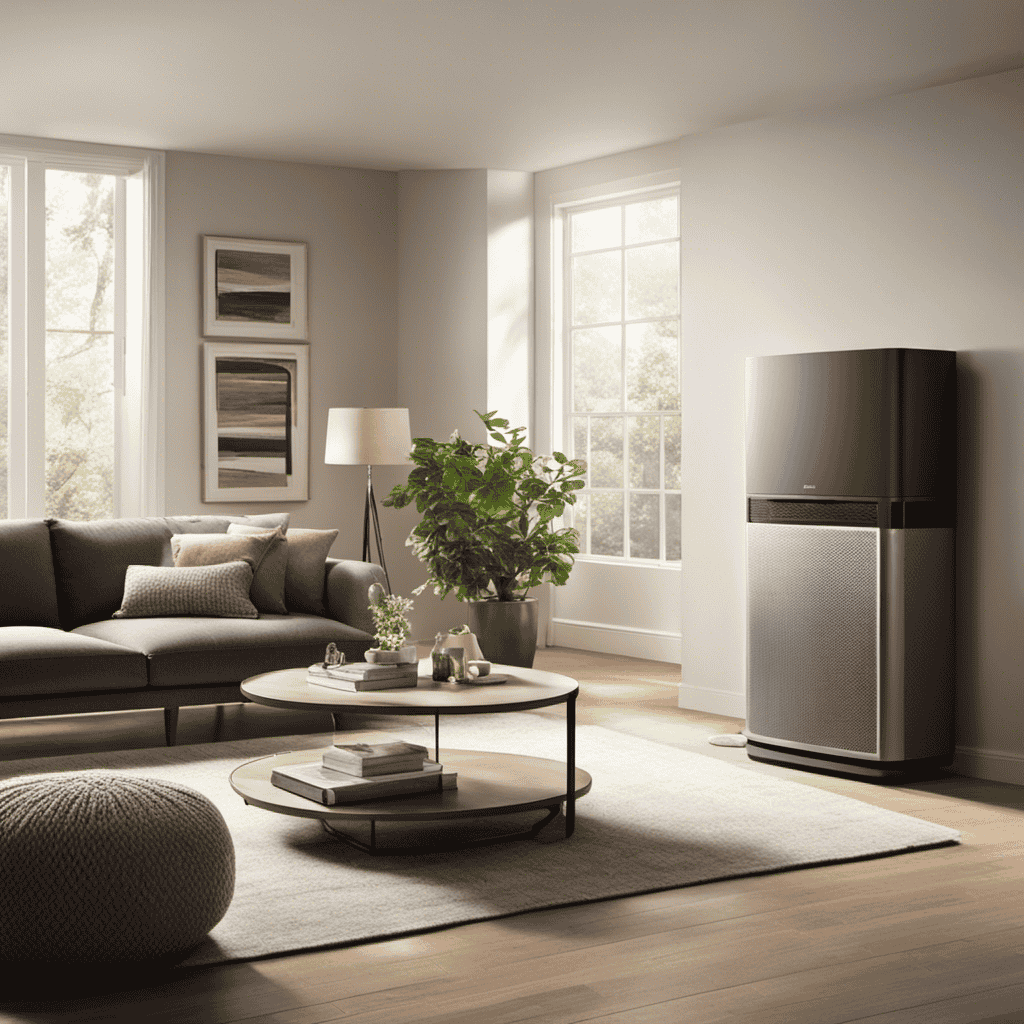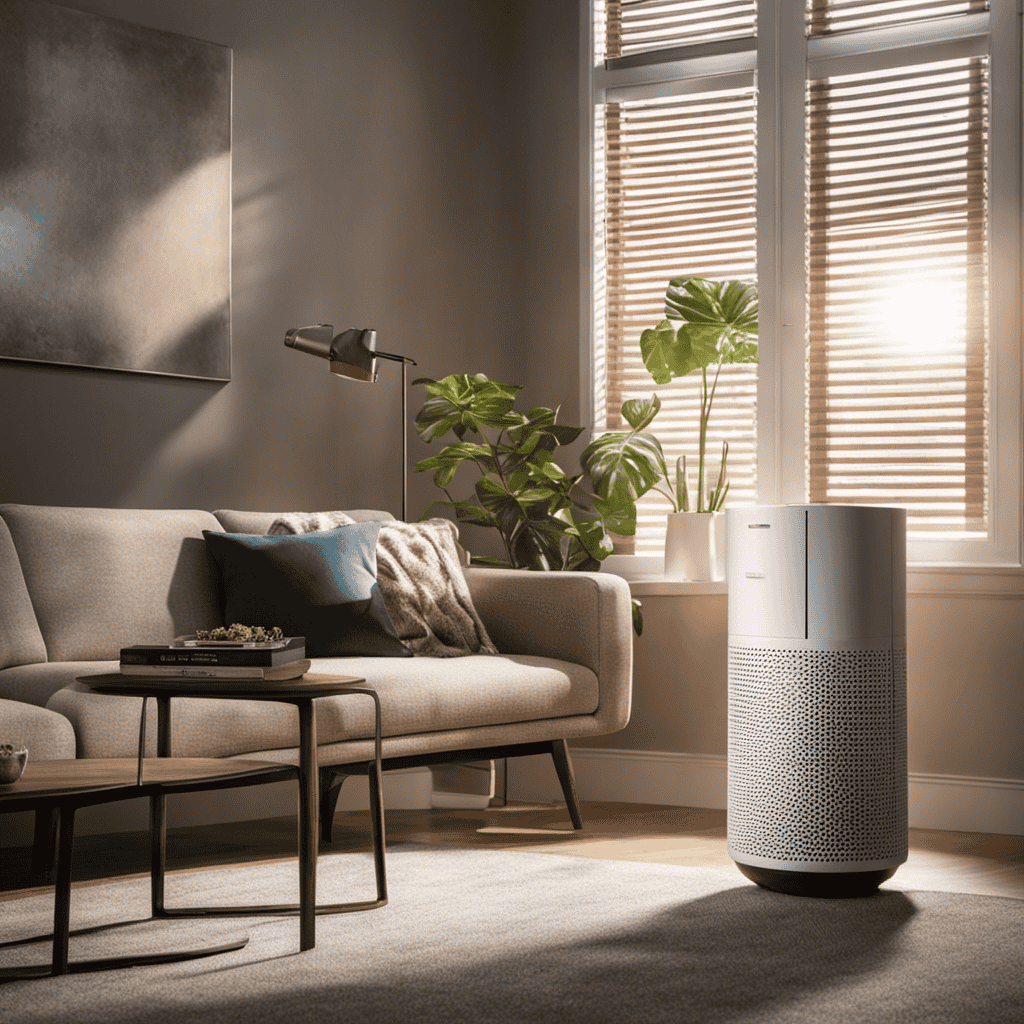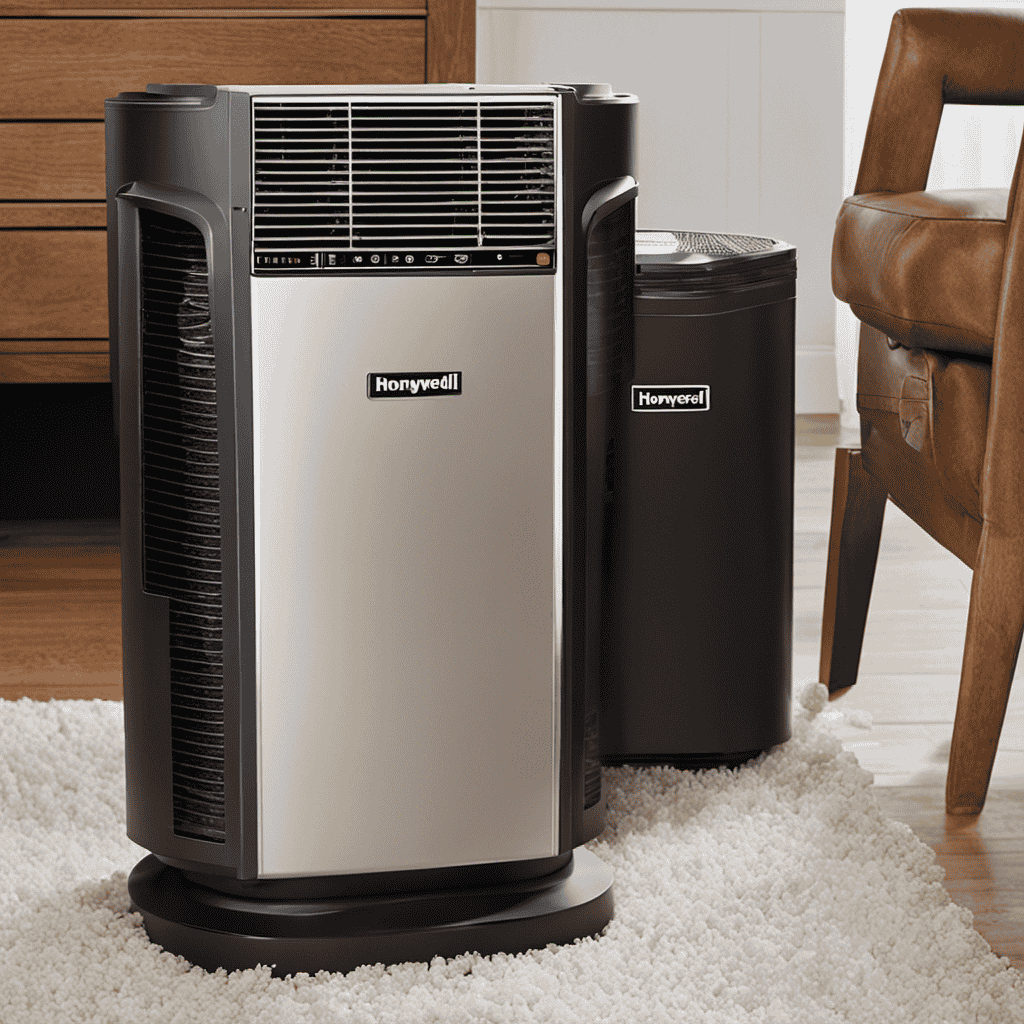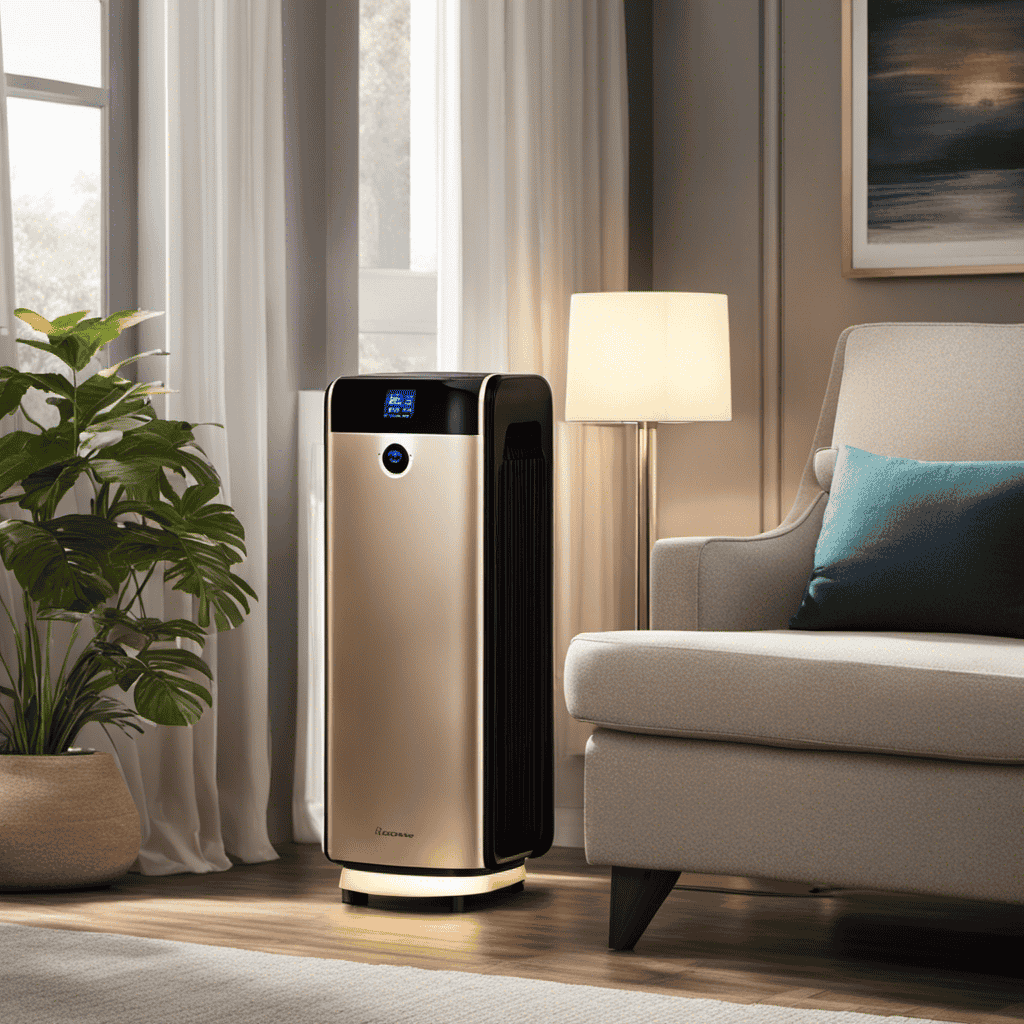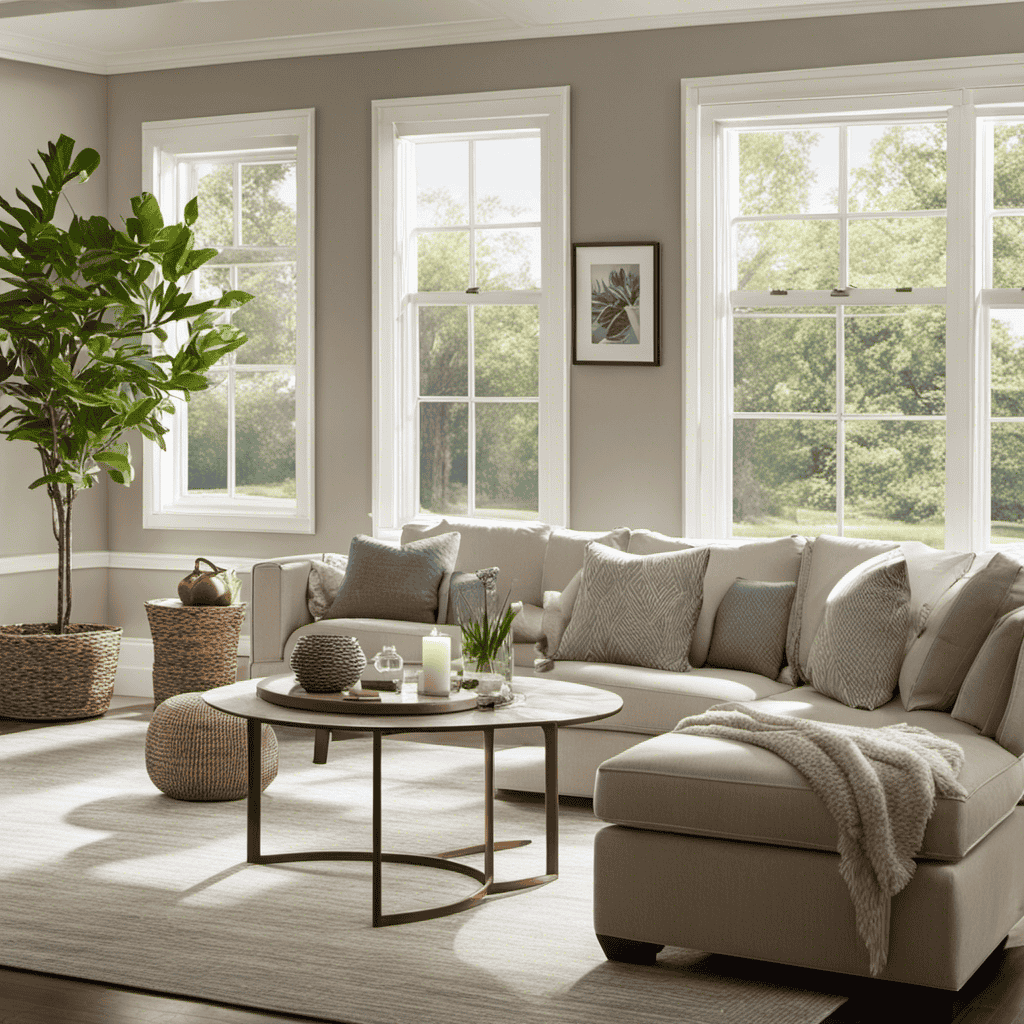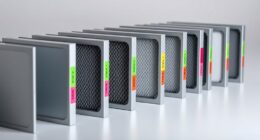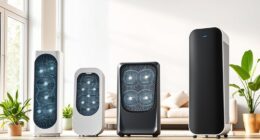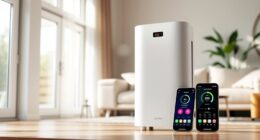Selecting an air purifier can seem like an insurmountable challenge due to the plethora of choices available. There are numerous aspects to ponder, such as the device’s size and the area it can purify, along with the various air cleaning technologies on the market, which can make deciding on the perfect option a formidable undertaking.
However, fear not! In this article, I will provide you with all the research-based information and data you need to find the perfect air purifier for your needs.
So let’s dive in and explore what air purifier to buy.
Key Takeaways
- Consider the size of the room and choose an air purifier with a coverage area that matches or exceeds the room size.
- Look for air purifiers with HEPA filters to remove dust, pollen, pet dander, and mold spores, and activated carbon filters to eliminate odors, smoke, and volatile organic compounds (VOCs).
- Take into account the noise level of the air purifier and read consumer reviews to ensure its effectiveness and performance.
- Regularly clean or replace filters to maintain optimal air purifier performance and indoor air quality.
Factors to Consider When Choosing an Air Purifier
When choosing an air purifier, you’ll want to consider factors such as room size, filtration system, and noise level.
It is important to research different air purifier brands and read consumer reviews to make an informed decision. Consumer reviews provide valuable insights into the performance and reliability of different air purifiers.
Look for brands that have positive feedback and high ratings from users. These reviews can give you an idea of how well a particular air purifier works in real-world conditions.
By considering consumer reviews and comparing different brands, you can find an air purifier that suits your needs and preferences.
Now, let’s explore the types of air purifiers and their benefits.
Types of Air Purifiers and Their Benefits
One popular option is the HEPA filter, which can effectively remove allergens and pollutants from the air. HEPA stands for High-Efficiency Particulate Air, and these filters are capable of capturing particles as small as 0.3 microns with an efficiency of 99.97%.
When choosing an air purifier, it is important to consider the type of filter it uses. Here are three types of air purifiers and their benefits:
-
HEPA Filter: HEPA filters are highly effective in removing airborne particles, such as dust, pollen, pet dander, and mold spores. They are recommended for individuals with allergies or asthma.
-
Activated Carbon Filter: Activated carbon filters are excellent at removing odors, smoke, and volatile organic compounds (VOCs) from the air. They are commonly used in air purifiers for improving indoor air quality.
-
UV-C Light: Air purifiers with UV-C light use ultraviolet technology to kill bacteria, viruses, and other microorganisms. They are often used in healthcare settings to prevent the spread of infections.
Considering air purifier brands and certifications, look for reputable brands that have been independently tested and certified by organizations like the Association of Home Appliance Manufacturers (AHAM) and the Asthma and Allergy Foundation of America (AAFA). These certifications ensure that the air purifier meets certain performance standards and is effective in improving indoor air quality.
In conclusion, when choosing an air purifier, it is important to consider the type of filter it uses, such as HEPA, activated carbon, or UV-C light. Additionally, selecting air purifiers from reputable brands with certifications provides assurance of their effectiveness.
Now, let’s move on to discussing the size and coverage area of air purifiers.
Size and Coverage Area of Air Purifiers
To determine the appropriate size and coverage area for an air purifier, consider the square footage of the room where it will be used. Different air purifier brands offer various sizes and coverages to suit different room sizes. When looking at air purifier reviews, pay attention to the recommended room size mentioned by the manufacturer. This information helps in selecting the right air purifier for your needs.
The coverage area specified by the brand indicates the maximum square footage the purifier can effectively clean. It is important to choose an air purifier with a coverage area that matches or exceeds the size of your room. By considering these factors and reviewing the data provided by air purifier brands, you can make an informed decision about the size and coverage area of your air purifier.
Understanding Air Purification Technologies
When it comes to air purification technologies, it’s important to understand the different types of filters available. HEPA filters, for example, are highly effective in removing particles as small as 0.3 microns. Ionizers, on the other hand, use charged particles to attract and neutralize contaminants. Another technology to consider is UV-C light, which can help kill germs and bacteria in the air.
Understanding these filter types and their effectiveness is crucial in choosing the right air purifier for optimal indoor air quality.
Filter Types Explained
There’s a variety of filter types available for air purifiers, each serving different purposes. When it comes to filter selection, it’s important to understand the common pollutants you want to target.
Here are three commonly used filter types:
-
HEPA Filters: High-Efficiency Particulate Air (HEPA) filters are designed to trap particles as small as 0.3 microns, including dust, pollen, pet dander, and mold spores. They are highly effective in removing airborne allergens and are recommended for individuals with allergies or asthma.
-
Activated Carbon Filters: These filters are excellent at removing odors, gases, and chemicals from the air. Activated carbon has a large surface area that helps adsorb and trap these pollutants. They are particularly useful in eliminating smoke, VOCs (volatile organic compounds), and cooking smells.
-
UV-C Filters: Ultraviolet-C (UV-C) filters use ultraviolet light to destroy bacteria, viruses, and other microorganisms. They are effective in preventing the spread of airborne diseases. However, UV-C filters are not capable of removing particulate matter, so they are often used in combination with other filter types.
Ionizers Vs. HEPA Filters
Ionizers, also known as negative ion generators, are a popular alternative to HEPA filters for air purification. When comparing their efficacy, research shows that ionizers have the ability to remove airborne particles and pollutants from the air. Studies have demonstrated that negative ions generated by ionizers can effectively reduce the concentration of airborne allergens, such as dust mites, pollen, and pet dander.
Furthermore, negative ions have been found to neutralize harmful substances such as bacteria and viruses. However, it is important to note that ionizers may produce ozone as a byproduct, which can have health implications, especially for individuals with respiratory conditions.
While HEPA filters are highly effective at capturing particles, they do not have the ability to neutralize harmful substances like ionizers do. Ultimately, the choice between ionizers and HEPA filters depends on the specific needs and health considerations of the individual.
UV-C Light Effectiveness
UV-C light, when used in air purifiers, can effectively destroy harmful microorganisms such as bacteria and viruses. This technology works by emitting ultraviolet light at a wavelength of 254 nanometers, which is capable of breaking down the DNA and RNA of these microorganisms, rendering them unable to reproduce and causing their death.
The effectiveness of UV-C light in air purifiers is supported by scientific research and studies that have shown its ability to reduce the concentration of airborne pathogens. However, it is important to note that UV-C light is not effective against all types of contaminants, such as dust and allergens.
Additionally, ozone generators, often used in conjunction with UV-C light, can produce ozone as a byproduct, which can be harmful to human health. On the other hand, activated carbon filters used in air purifiers can effectively remove odors, gases, and volatile organic compounds from the air. However, they may not be as effective in capturing larger particles like dust and pollen.
Transitioning to the next section, it is also important to consider the noise levels and energy efficiency of air purifiers.
Noise Levels and Energy Efficiency of Air Purifiers
When choosing an air purifier, it’s important to consider the noise levels and energy efficiency. Air purifier noise levels can vary significantly depending on the model and brand, so finding a balance between quiet operation and effective air purification is key. Look for air purifiers with noise levels below 50 decibels to create a peaceful environment.
In addition to noise levels, energy efficiency is another crucial factor to consider. Energy efficient air purifiers can help reduce electricity costs and minimize environmental impact. Look for models with ENERGY STAR certification, as they meet strict energy efficiency guidelines.
By choosing an air purifier with low noise levels and high energy efficiency, you can enjoy clean air without disturbing your peace or increasing your energy bills.
Now, let’s move on to discussing maintenance and filter replacement for air purifiers.
Maintenance and Filter Replacement for Air Purifiers
To keep your air purifier running smoothly and effectively, it’s important to regularly clean or replace the filters. Filters play a crucial role in trapping airborne particles and pollutants, ensuring the air you breathe is clean and healthy.
Here are three key points to consider regarding filter maintenance:
-
Filter Lifespan: Filters have a limited lifespan and need to be replaced periodically. The exact lifespan depends on factors such as the model of your air purifier and the air quality in your environment. Generally, it is recommended to replace filters every 6 to 12 months to maintain optimal performance.
-
Cleaning Techniques: Some filters, such as pre-filters and washable filters, can be cleaned rather than replaced. Follow the manufacturer’s instructions for proper cleaning techniques. Regular cleaning helps extend the filter’s lifespan and ensures efficient air purification.
-
Importance of Regular Maintenance: Neglecting filter maintenance can lead to reduced air purifier performance and compromised air quality. Regularly cleaning or replacing filters not only ensures cleaner air but also helps prolong the overall lifespan of your air purifier.
Additional Features and Smart Technology in Air Purifiers
Don’t overlook the convenience of air purifiers with additional features and smart technology. These can enhance your overall experience and make it easier to maintain clean air in your home.
Smart features and advanced technology in air purifiers offer a range of benefits that go beyond basic air filtration. These features include Wi-Fi connectivity, remote control operation, and smart sensors that monitor air quality in real-time.
With Wi-Fi connectivity, you can conveniently control and monitor your air purifier using your smartphone or other smart devices. Remote control operation allows you to adjust settings and modes from anywhere in your home. Smart sensors can detect pollutants in the air and automatically adjust the purification settings accordingly.
These advanced technologies not only provide convenience but also ensure that your indoor air remains clean and healthy.
Budget-Friendly Air Purifiers That Deliver Results
If you’re on a budget, you can still find air purifiers that deliver effective results without breaking the bank. Here are the top rated affordable air purifiers that are perfect for small spaces:
-
Honeywell HPA300: This air purifier is highly recommended for its powerful cleaning capabilities. With a true HEPA filter, it can capture up to 99.97% of airborne particles as small as 0.3 microns. It also has an activated carbon pre-filter to reduce odors and VOCs.
-
Levoit LV-H132: This compact air purifier is perfect for small rooms and offices. It features a three-stage filtration system, including a true HEPA filter, to remove allergens, pet dander, and smoke. It also has a night light function and operates quietly.
-
GermGuardian AC4825: This affordable air purifier is ideal for small spaces. It utilizes a true HEPA filter to trap dust, pollen, and mold spores. It also has a UV-C light that can kill airborne germs, viruses, and bacteria. It comes with a charcoal filter to reduce odors.
With these best budget air purifiers for small spaces, you can breathe cleaner air without breaking the bank.
Frequently Asked Questions
Can an Air Purifier Remove All Types of Pollutants From the Air?
Yes, an air purifier can remove many types of pollutants from the air, but it may not eliminate all of them. Certain air purifiers are designed to target specific pollutants, such as smoke or pet dander.
How Long Do Air Purifier Filters Typically Last Before They Need to Be Replaced?
Air purifier filters typically last between 3 to 6 months before needing replacement. Signs of a clogged filter include decreased air flow and increased dust in the room. Regularly checking and replacing filters is important for optimal performance.
Are There Any Health Risks Associated With Using an Air Purifier?
Using an air purifier for long periods may have some health risks, such as dryness in the respiratory system. Different air purification technologies vary in effectiveness at reducing indoor air pollution.
Can an Air Purifier Eliminate Odors From the Air?
Yes, an air purifier can eliminate odors from the air. It is effective against pet odors and can also help to reduce the presence of cigarette smoke, improving the overall indoor air quality.
Are There Any Specific Air Purifiers That Are Recommended for People With Allergies or Asthma?
There are specific air purifiers recommended for people with allergies or asthma. They can help alleviate symptoms by filtering out allergens and irritants like pet dander and smoke particles.
Conclusion
In this quest for clean and purified air, I have embarked on a journey that led me to explore various factors when choosing an air purifier.
Through my research, I have discovered the significance of understanding the different types of air purifiers and their benefits. I have also delved into the importance of size, coverage area, and air purification technologies.
Noise levels, energy efficiency, maintenance, and filter replacement have been critical considerations as well. Additionally, the allure of additional features and smart technology has captured my attention.
Finally, I have come across budget-friendly air purifiers that surprisingly deliver remarkable results. The symbolism of this journey signifies the hope and desire for a breath of fresh air, both literally and metaphorically.
